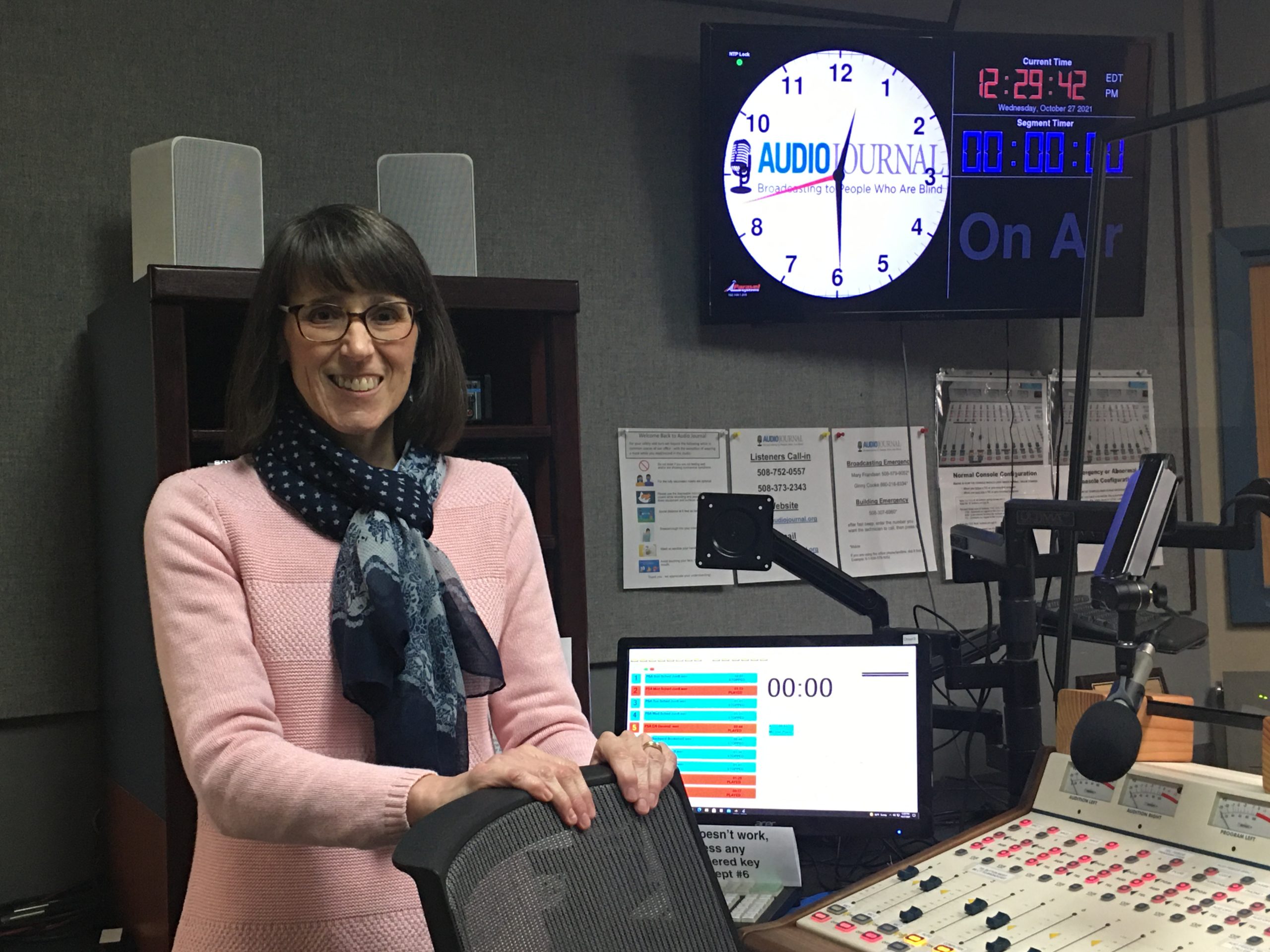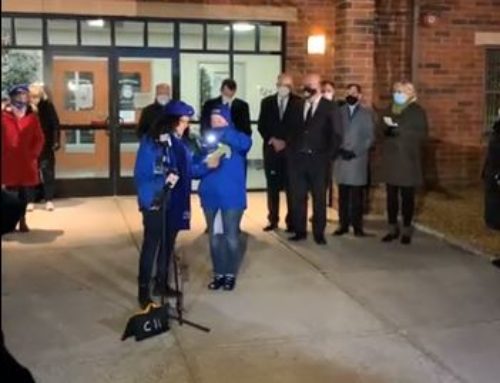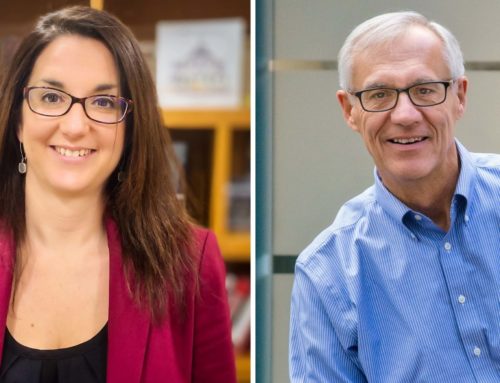WORCESTER — Inspired by her blind sister-in-law, Elaine Stabile began volunteering at Audio Journal fourteen years ago.
“I have a sister-in-law who is blind and has a guide dog, who lives in the New York area, and I watched how many services she has had available to her over the years,” said Stabile. “And there was a newspaper article about Audio Journal while I was still working and when I retired, I remembered reading the article and because I have someone in my family who benefits from similar services, that’s how I volunteered.”
Stabile reads the Worcester Business Journal with a partner every other Wednesday. Audio Journal is a nonprofit that provides radio reading service for the visually impaired. It’s one of six services of its kind available in the state. Among the programming offered by Audio Journal is an interview show by Bob Branco, a visually impaired New Bedford resident, “Speaking Volumes,” a monthly radio book group that was featured in Oprah Magazine in 2019, a radio theater group and local news, which can be heard throughout the day.
“Local news is hard to get,” said Mary Frandsen, the executive director of Audio Journal since October 2019. “They turn on the TV, they hear national news, they hear Boston news. We read the Telegram & Gazette, we read the Spencer New Leader, we read the Barre Gazette, the Milford Town Crier, all those small towns in Central Massachusetts that our listeners live in.”
Audio Journal had small beginnings. According to Frandsen, it began operating out of an unused closet at the Worcester Public Library in 1987. Eventually the organization moved to Lincoln Street, then in 2003, it relocated again to its present home on West Boylston Street, which is more easily accessible for the organization’s disabled volunteers. Audio Journal has two staff members, including Frandsen and about 60 volunteers. Prior to the pandemic, they had about 130 volunteers.
COVID impacted the daily operations of Audio Journal, but never the underlying mission of serving the visually impaired. Frandsen took the reins of the two-woman operation during the pandemic to deliver Audio Journal’s programming in ways she never anticipated.
“Prior to COVID, I didn’t know how to do any of this, but now I know how to do all of it,” said Frandsen.
She taught herself how to use WireReady, Audio Journal’s audio production software. WireReady requires three computers to operate. One computer contains the playlist for the day, the other records the programs and uploads them onto Audio Journal’s website for an on-demand podcast, and the third computer in the studio is used by volunteers to play public service announcements, among other things.
Frandsen is also on top of all the state-of-the-art ways to listen to radio in the 21st Century. Audio Journal’s programming is available on 67 kilohertz, a subcarrier frequency of WICN, which can only be accessed using a special radio that the organization provides to listeners. They also broadcast out of the tower at WXPL, Fitchburg State University’s radio station.
“Our signal is not very strong, so to listen to us on the radio, you have to have a specially tuned radio and we provide those to our listeners at no cost,” said Frandsen.
In addition, Audio Journal has an app, can be streamed online, and listeners with a landline telephone can call in and hear the show over the phone. It’s also broadcast on several local access television stations.
“Oftentimes they have the government calendar up and the audio behind it with the Audio Journal,” said Frandsen.
If you are interested in volunteering with Audio Journal, please contact Mary Frandsen via email at mary@audiojournal.org.






Leave A Comment